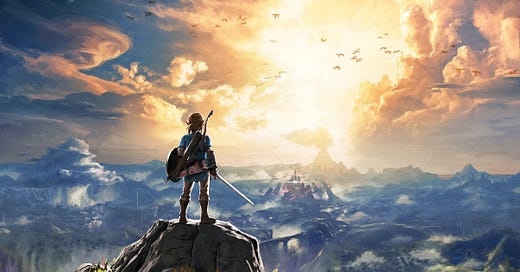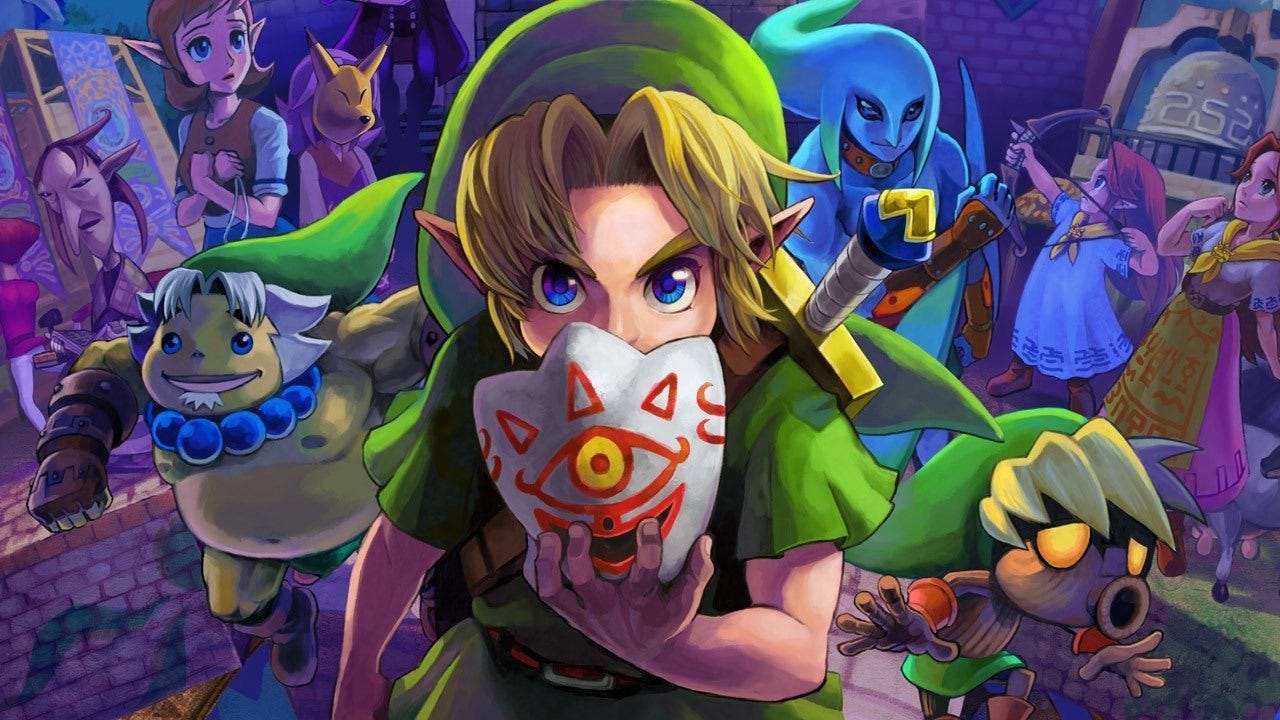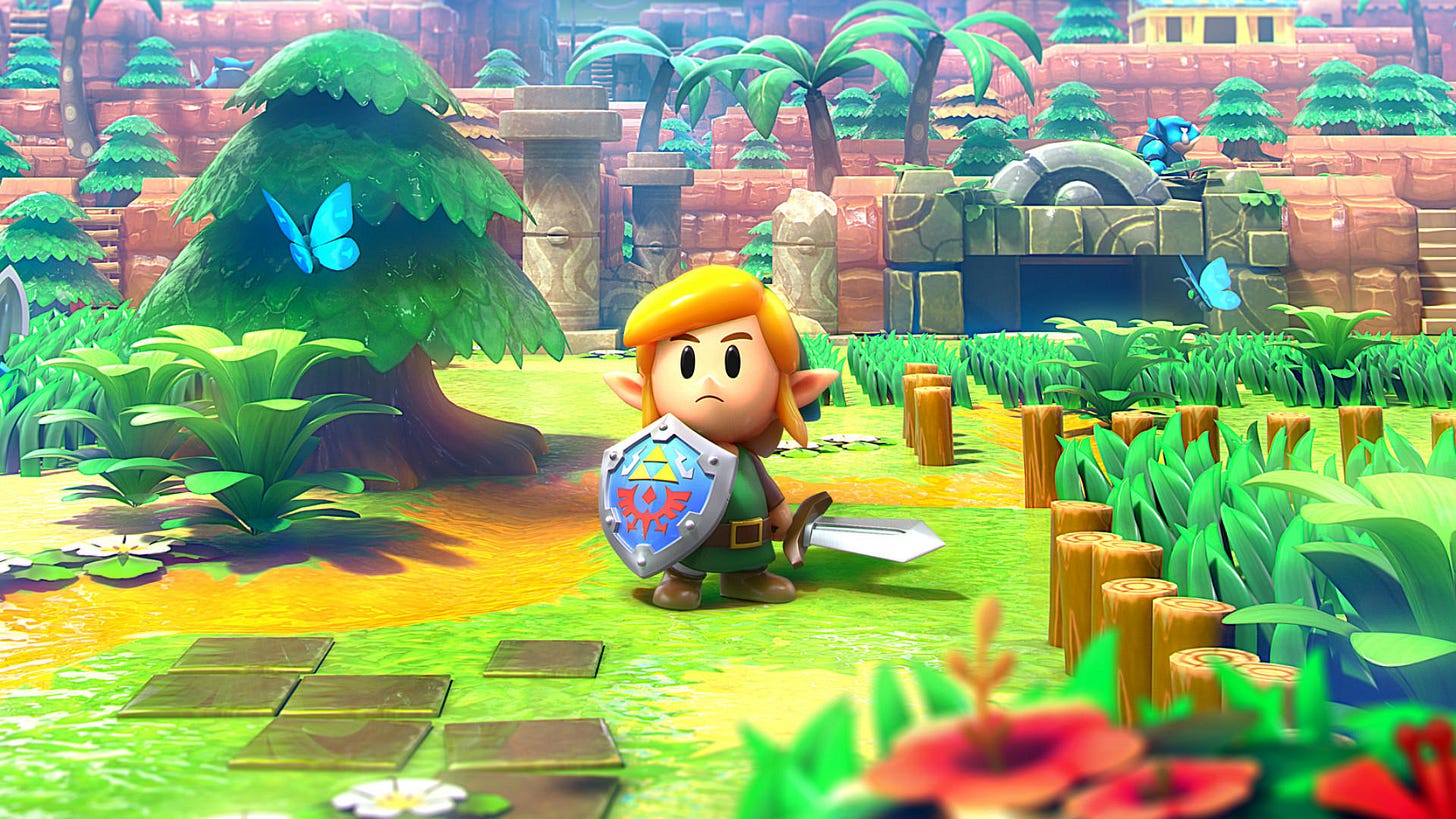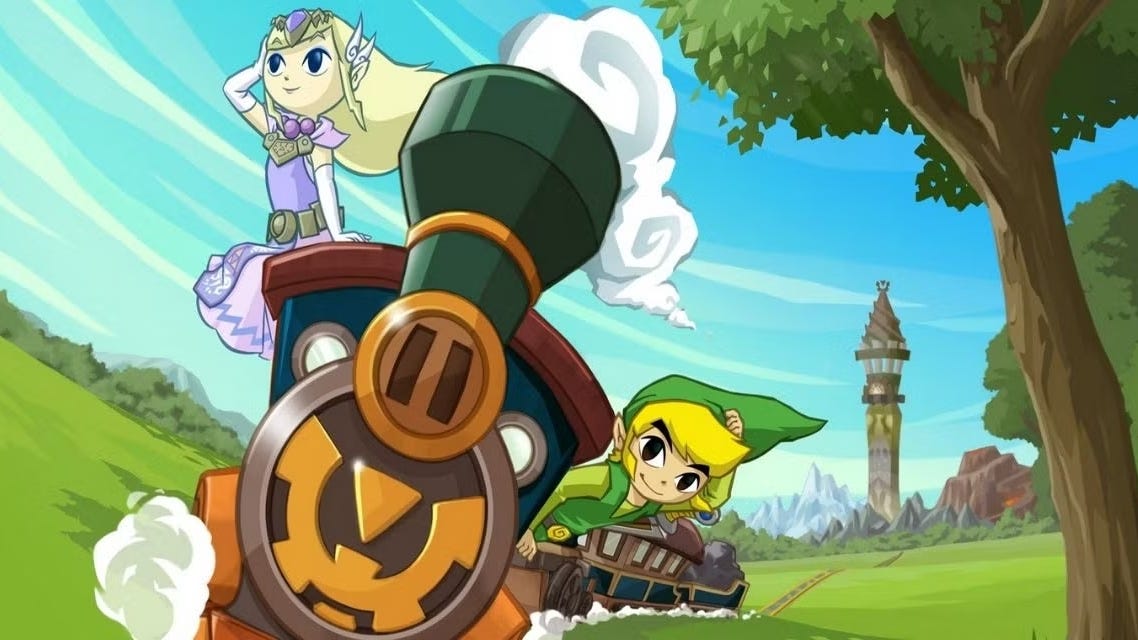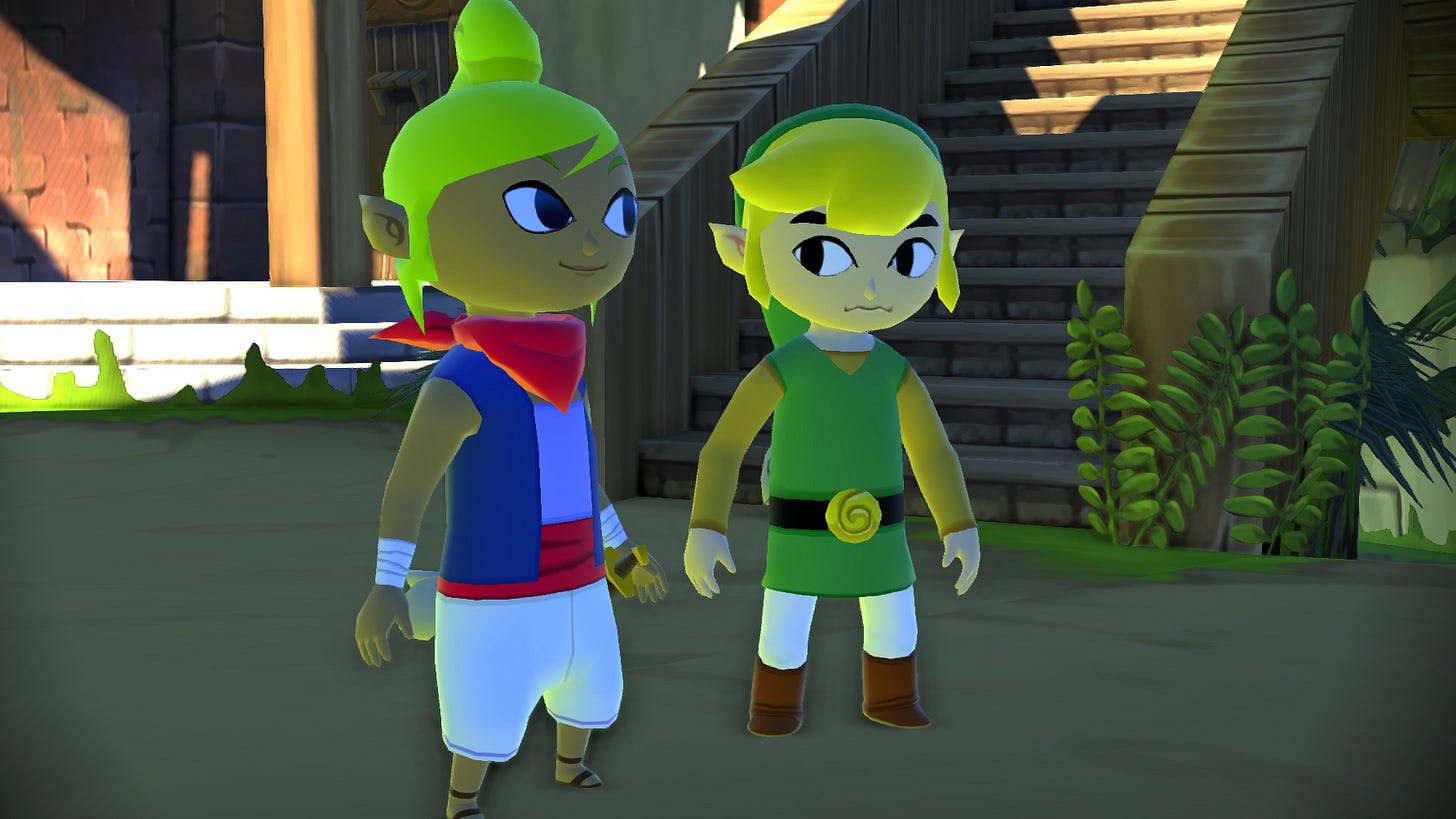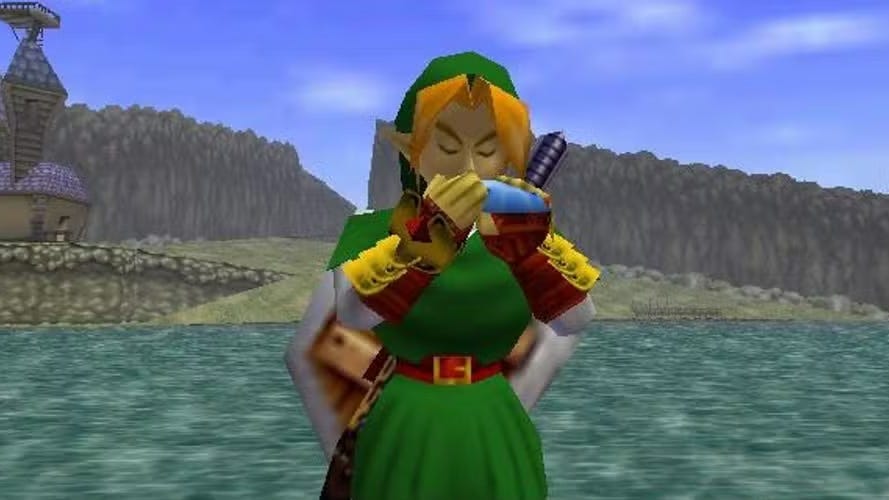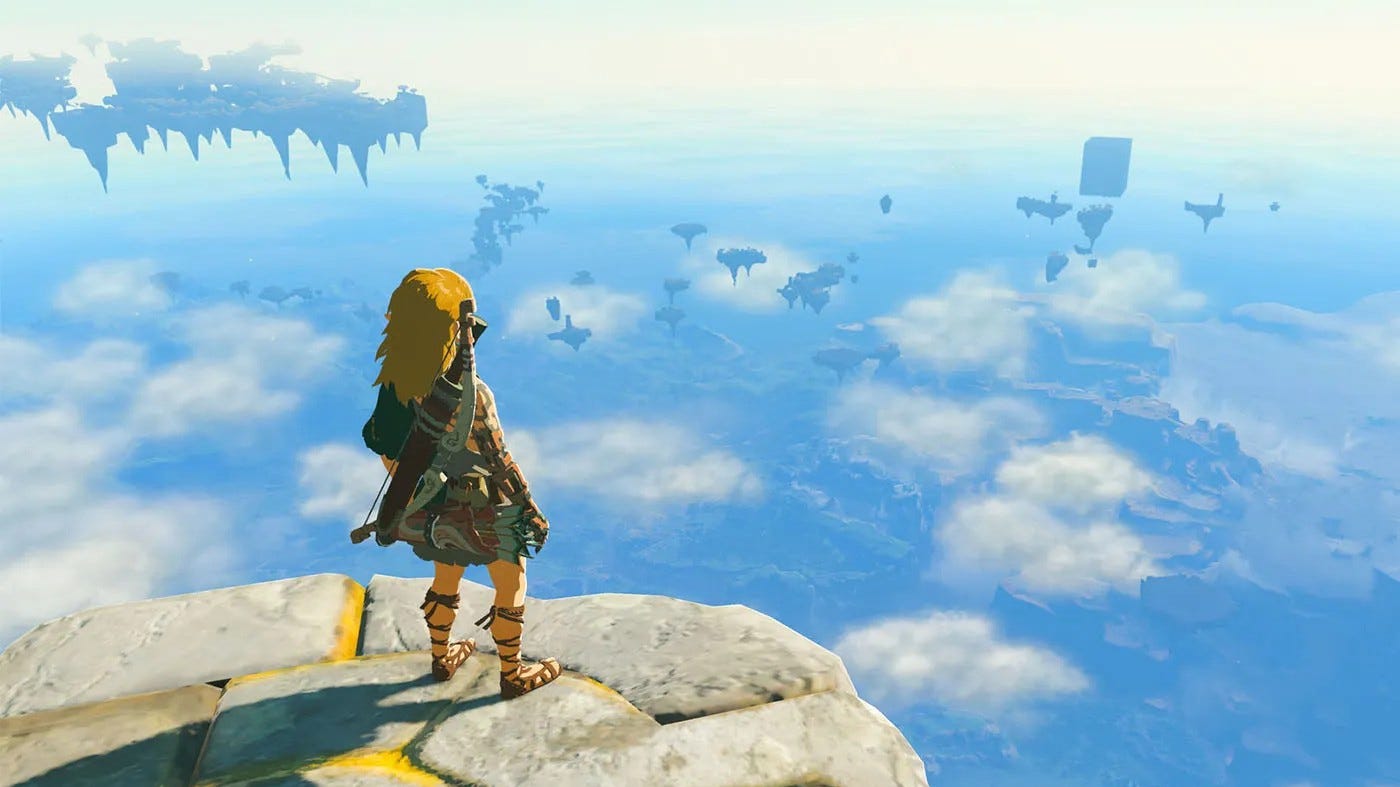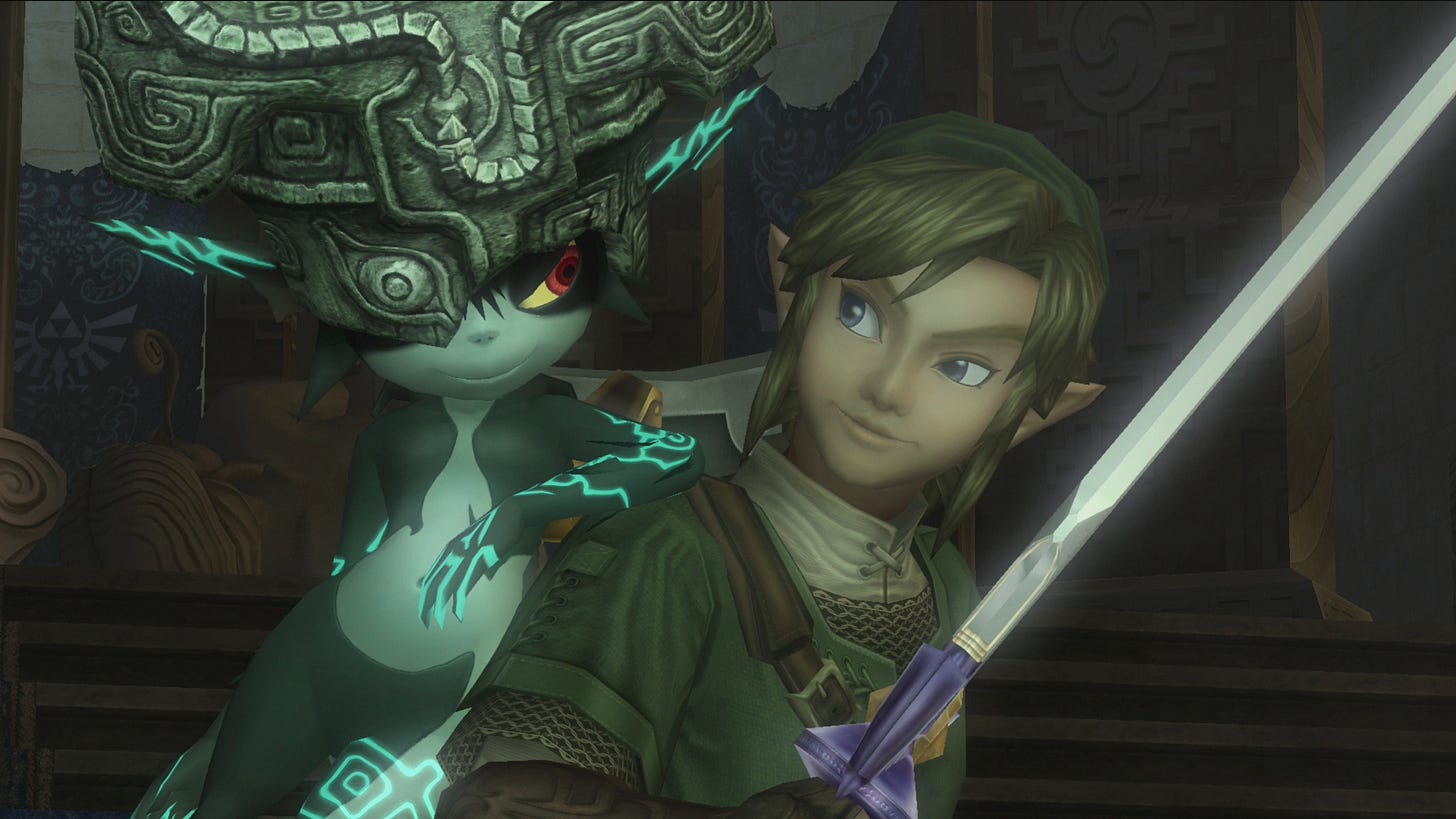As a kid, I remember stepping into Blockbuster (a rental store from a bygone era) and wanting a new video game for my Game Boy Color. I had collected all eight badges, defeated the Elite Four, and captured Mewtwo more times than I could count on Pokémon Red, so I was ready for a new adventure. A new game to keep me entertained on the long car rides my family took to visit relatives in Tallahassee or Miami. But there was a problem: I didn’t know any video games. In this dial-up era of the internet, I only knew Pokémon, Mario, and Sonic, so walking through the aisles of Blockbuster felt like exploring a foreign planet. I didn’t know what was good, what was bad, what could hold my attention, what was fun. But luckily, as I was looking through the shelves, my dad handed me a game called The Legend of Zelda: Link’s Awakening and said, “Try this. I used to play Zelda when I was a kid.”
I questioned my father’s video game bonafides, but I went with his recommendation nonetheless, rented the game, and popped the cartridge in when I got home. At first, I didn’t quite understand the game. All I did was wander around an island, solve puzzles, slash enemies, and collect instruments to wake something up in a giant egg. It felt entirely different from Pokémon.
But I was hooked.
Upon returning the rental—before the late fees kicked in—my dad agreed to buy my brother and I two Zelda games that we could own: The Legend of Zelda: Oracle of Ages and The Legend of Zelda: Oracle of Seasons. I took Ages. My brother took Seasons. And from there, a life-long journey with the Zelda series began.
I ran through Oracle of Ages and then swapped with my brother to play Oracle of Seasons. We then got Ocarina of Time for our N64 and quickly fell in love. Then came The Wind Waker for the GameCube, Twilight Princess for the Wii. I was there on day one to purchase the Switch so I could immediately play Breath of the Wild. I most recently beat Tears of the Kingdom. In between, I played Minish Cap, Phantom Hourglass, Spirit Tracks, and Link Between Worlds on some of the handheld consoles. And I even made time to go back and play some of the older games like the original The Legend of Zelda, The Adventure of Link, and Link to the Past.
In short, I’ve played every mainline Zelda game. And overtime, I’ve come to appreciate each one for its characters, dungeons, weapons, plot twists, and unique take on the ongoing legend. Below is my ranking of these mainline games that best bring those elements together and offer the most memorable adventures.
The Honorable Mentions 🗝
the just-missed-the-cuts
Majora’s Mask
Oracle of Seasons
Skyward Sword
In the past decade or so, Majora’s Mask has become a fun hipster pick for fans of the series to put high on their Zelda rankings. But it’s a trend I can’t support. I think the time mechanic in Majora’s Mask is both incredibly unique and brilliantly executed from a game design perspective, but I’ve never found the game that fun. The penalty for losing your progress always felt too harsh, and I never found joy in spending a day wandering around and starting a new quest, while having no idea if I had enough time to make anything I did worth it. And while I think the masks are cool, they came at the cost of old fashioned items. So, while I respect the game, it only makes it to the honorable mentions section along with other entries that weren’t worthy of making my real list.
Now, on to the real list.
The Hyrulian Legends 🛡
the praise-worthy ones
Link’s Awakening
As I said earlier, Link’s Awakening was the first Zelda game I ever dabbled with, so there was no way I was leaving it off this list. However, it wasn’t until much later that I came to appreciate the game for its weirdness. The game doesn’t take place in Hyrule, many of series’ main characters are absent (like Zelda and Ganon), and there’s an odd dreamlike atmosphere surrounding both the people you meet and the actions you take. It famously takes inspiration from Twin Peaks (what wasn’t in the early nineties?), so its weirdness makes sense and leads to one of the most surreal stories in franchise history.
Echoes of Wisdom
The newest entry on this list is a game that proves this series still has plenty of room to innovate, reinvent, and create something new. Most noticeably, Echoes of Wisdom is the first game in which you don’t play as Link; you play as the titular character Zelda. That wrinkle alone was enough to pique my interest, but the uniqueness of the gameplay is what made the game hard to put down. In the game, Zelda wields a summoning rod that is used to summon everything from enemies to beds you can sleep in. Its a bit odd at first, but you quickly get used to it and learn to appreciate the amount of freedom you have to take down enemies and solve the game’s puzzles.
A Link to the Past
You have to respect your elders, and for me, the elder on this list is A Link to the Past. This game came before I really got into the franchise, so I never really got my hands on it during its heyday, but I played it later in life and saw all the makings of what made it such a standout to many Zelda fans. There are multiple worlds. There are a plethora of items. There are numerous dungeons. And there are some of the toughest bosses in the entire series. (The final fight with Ganon is one of the toughest ones I’ve ever had in a Zelda game.) So, I respect the game enough to put it on the list. Just not enough to put it higher.
A Link Between Worlds
I purposely have A Link Between Worlds just ahead of A Link to the Past because in a lot of ways, they’re the same game . . . just A Link Between Worlds is way way better. In this newer game, a lot of the dungeons from the predecessor are re-shaped into the cleanest version of themselves. Not only that, but the game also takes the dual world concept and expands on it in notable ways—most noticeably with characters. For example, in this game you meet Hilda, the Princess of Lorule (A Link Between Worlds’ version of the Dark World), who is clearly a mirror version of Princess Zelda. . . . And I could provide other examples, but—to avoid spoilers—I’ll just say that this game took the foundations of A Link to the Past and created a wonderful game that stands on its own.
The Master Swords 🗡
the can’t-put-down ones
Spirit Tracks
True Zelda heads might be surprised to see Spirit Tracks ranked so high, but that’s the thing about this game. It has no right to be this good . . . but it is! A sequel to Phantom Hourglass, Spirit Tracks improved upon the first game to hit the Nintendo DS in so many ways like more creative dungeons, funner items, and better bosses. But the secret sauce? Riding around on the train! Not only does it provide a unique way to navigate the world, but it leads to gameplay that is unlike any other game in the franchise. Being a conductor has never been more fun.
Oracle of Ages
While Link’s Awakening was the first game I ever played, Oracle of Ages is the first Zelda game I really sunk my teeth into and completed. For that reason, I have it ranked seventh and its sister game (Oracle of Seasons) in the honorable mentions. But that aside, I think Oracle of Ages is superior—if for no other reason, because of its story. Time traveling to change events and the landscape, meeting memorable characters like Ralph and Queen Ambi, and putting a stop to the evil Veran stuck with me way more than whatever happens in Oracle of Seasons.
Breath of the Wild
It’s not hyperbolic to say that Breath of the Wild revolutionized gaming. It’s open world structure was an earth-rattling experience for many gamers. The ability to go anywhere, fight anyone, climb anything (I can’t express how fun this is) was one of the most liberating leaps in gaming that I’ve ever experienced. I spent a lot of time exploring every inch of this version of Hyrule and while I think it’s worthy of its totemic place in gaming history, I have it just outside my top 5 because I found some of the dungeons disappointing and the bosses a bit repetitive. If it weren’t for those two critiques, I would’ve thought this was a perfect game.
Minish Cap
The 2D top-down Zelda games are an important part of the series’ legacy and Minish Cap is pound-for-pound the best one. For one, the “Zelda gimmick”—that Link can shrink—has never been better. It leads to discovering hidden worlds in bookshelves and the easiest of enemies turning into massive bosses. Plus, structurally, the game does one of the best jobs of balancing your time in dungeons and your time in the over world. Often, the over world stuff is some of the most fun you’ll have in the game. And finally, Elzo (your wisecracking hat in this game) is one of my favorite companions in the series. It all adds up to being a minish-sized game that packs a huge punch.
The Top of the Triforce 🌟
the best of the best
The Wind Waker
Few games in this franchise age as well as The Wind Waker. I liked the game when I first played it on the Gamecube but found a lot of its elements weird like the world being covered in water and the cel-shaded art style. But now, those same elements are what I love about the game. The world being covered in water is so unique and tied to one of the most surprising story-turns in franchise history. And the art style hasn’t aged a day, which can’t be said about a lot of the other games in the series. Throw in unique items like the grappling hook and the deku leaf, dungeons that test the meaning of dungeons, and maybe my favorite version of Link, and you end up with a timeless Zelda game.
Ocarina of Time
So far, I’ve spoken about the first Zelda game I played and the first game I really sunk my teeth into. Well, Ocarina of Time is the first Zelda game I fell in love with. It was the first video game that I ever saw as being truly special. From jumping from the top floor to break through the spider web in the Deku Tree, meeting Zelda for the first time in the gardens, pulling the Master Sword out of the Temple of Time and transforming into an adult, correctly navigating the Water Temple, learning Shiek’s secret—I just found the game filled with memorable moment after memorable moment. It was the first 3D Zelda game and set a standard that few games are able to meet to this day.
Tears of the Kingdom
When I picked up Tears of the Kingdom, I was expecting Breath of the Wild but with some sky islands. . . . Boy, was I foolish. Tears of the Kingdom is—in fact—Breath of the Wild but with some sky islands. But it’s also so. much. more. At the heart of it, Tears of the Kingdom is a giant sandbox. If Breath of the Wild allowed you to go anywhere, fight anyone, and climb anything, Tears of the Kingdom adds on the ability to create anything. And I mean ANYTHING. With its new Ultrahand ability, you can create boats, planes, hot-air balloons, rockets, bridges, cars, trains, and whatever you can dream up with collectible items and things lying around the game world. And if the game stopped there, I would still view it as one of the greatest video games of all-time, but Tears of the Kingdom goes out of its way to improve on Breath of the Wild’s dungeons and bosses, create even more compelling story elements, and include an entire underground world to go with Hyrule’s familiar overworld and the new sky islands. No matter how you look at it, Tears of the Kingdom is a remarkable piece of work.
Twilight Princess
When it comes to Zelda games, the key elements to me are dungeons, bosses, puzzles, side characters, and items. Twilight Princess is top 2 in all of those categories, and it isn’t two. It’s one and it tops my list of Zelda games.
Now, Twilight Princess isn’t without its flaws. The opening tends to drag for many gamers. The “Zelda gimmick” is that Link turns into a wolf (which is far from my favorite gimmick). And collecting tears of light is one of the most annoying tasks in Zelda games. But the slow opening helps set the stage for the epic adventure you eventually embark on. Wolf-link adds to the somber tone permeating throughout the game. And despite the tear-collecting being annoying, the reward of ridding an area of the twilight always seems worth it. Then you throw in all the other elements I previously mentioned: the dungeons (all big, all unique, all memorable), the bosses (all big, all unique, all memorable), the puzzles (perfectly challenging), the side characters (MIDNA IS THE BEST), and the items (the spinner, the ball and chain, and the double clawshot are all top tier)—and you end up with a game that often feels as epic as The Lord of the Rings.
I mean, this game has it all. It has Zelda staples like other worlds, hidden villains, and story surprises. You get to joust King Bulblin on an epic bridge over Zora's River, try to make soup for a sick Yeti, and participate in an Old Western shootout in the Hidden Village. And it’s gloomy art style is heavily underappreciated. But more than anything, Twilight Princess feels like the most epic adventure in the series. Starting as a quiet farmhand, transforming into a wolf, befriending Midna, rescuing your fellow villagers, and uncovering the mystery of the Twilight are all ingredients for one of the most legendary journeys you can take in the series.
But with that said, if this list taught me anything, it’s how grateful I am for the series as a whole. Each of these games arrived at different times in my life, but it has seemingly always been when I needed a new adventure. And maybe that’s the unifying magic of Zelda. The games change, the worlds shift, and there’s often a new gimmick thrown in. But it’s always a new adventure that stays with you long after you put the controller down.
Anyways, that’s all I have for now!
As always, adventure far, explore wide, and dive deep! 🧭


